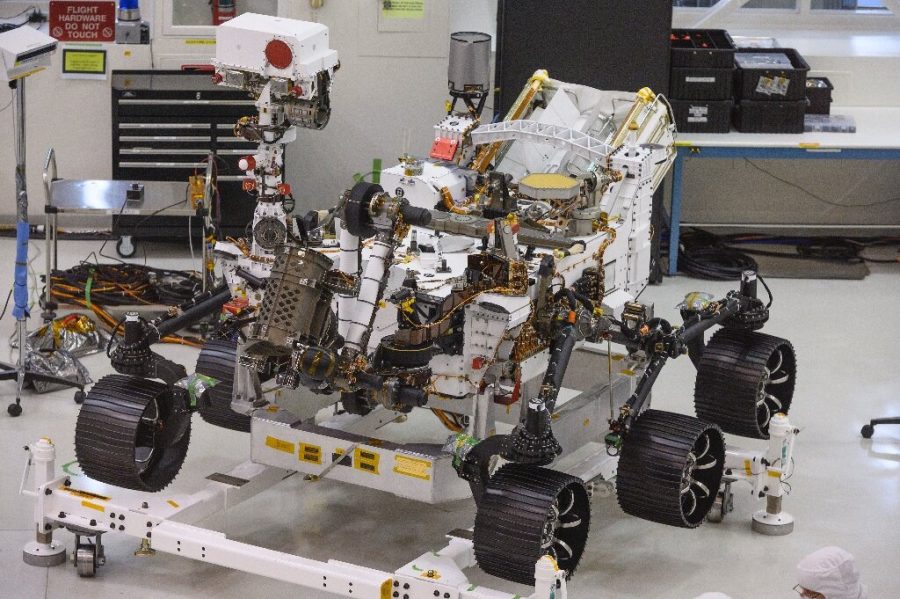NASA launches fifth rover– Perseverance– to Mars
February 26, 2021
NASA landed its fifth rover, called Perseverance, on a mission to Mars on February 18. The rover touched down on Mars in a region called Jezero Crater, where it will set out to shed new light and understanding on this Red Planet. Its departure date from Earth, however, was July 30, 2020. Perseverance was created by the Jet Propulsion Laboratory, located in Southern California. Many sat anxiously as the rover departed and descended, waiting to see what new information would be discovered, while many still sit in excitement over the possibilities of what could be uncovered on Mars by this very important rover.
Mars is the fourth planet from the sun that contains a cold, dusty, and desert world along with a very thin atmosphere. Mars also has four seasons, just like Earth. It can have ice caps, canyons, big wind gusts, and many other natural forces affecting it. Mars has large amounts of iron minerals in its soil, which causes the soil and atmosphere to appear red–hence the nickname “Red Planet.” Mars’ atmosphere is mainly made up of a gas called carbon dioxide. Mars has two moons: one named Phobos and the other Deimos. Mars is relatively a very small planet. Mars’ orbit around the sun, however, takes about 687 earth days to complete due to its orbital rotation.
This rover’s job is to look for signs of past microbial life on Mars (better known as astrobiology), as well as experimenting with a natural resource in hopes to aide in sending humans to Mars some time in the near future. Perseverance is the size of a small SUV, much like another previous rover: Curiosity. This rover will be testing a method for getting oxygen from the air in the Martian atmosphere. If proven successful, this would lead to many more explorations of the Red Planet. The tests will also make it so NASA employees can precisely create astronomical suits comparable with the harsh environment. Perseverance will be the first mission to collect and analyze some of Mars’ hidden rocks and regolith to help scientists gain a deeper understanding of the planet.
When the rover touched base on Mars, its cameras caught many valuable sights on camera, and its video recording allowed the scientists who were tracking this rover to hear about ten seconds into a 60 second clip, a Martian breeze and the rover’s mechanical parts operating on the surface of the Red Planet. Perseverance had five cameras located in different positions to capture its descent. Two of the five cameras gave access to a top view of the space above Perseverance, and another captured the downward view. Some were also placed on the back of the rover’s shell, which caught the parachute’s deployment on camera as well. A video of the rover’s landing can be found on a recently uploaded Youtube video.
As time progresses, Perseverance will complete a 360 degree analysis of Jezero, while scientists monitoring the rover will be collecting and depicting the data. Weather observations have also started to be completed, and those will be scrutinized as they continue to get relayed in by the rover.
Perseverance is still collecting data and specimens to be evaluated (and will continue to for a long time), and scientists wait hopefully to see if any new breakthroughs can take place. When Perseverance is done, scientists might just hold the key to sending man missions to Mars.



